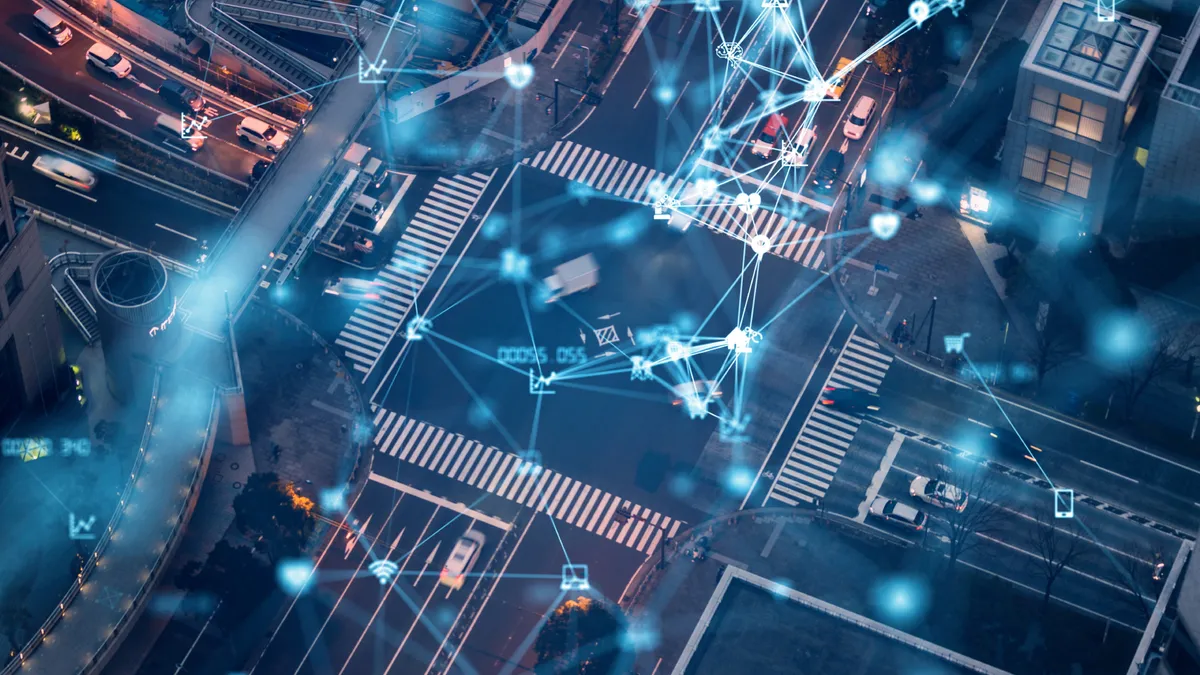The federal government sees potential for electronic tolling working with vehicle-to-everything (V2X) tech upgrades for vehicles and infrastructure.
With motorists voluntarily adopting the tech, “the tolling industry would be able to take advantage of and migrate to the V2X technology for toll collection,” a Federal Highway Administration spokesperson told Smart Cities Dive sister publication Trucking Dive in an email earlier this month.
The Department of Transportation’s V2X deployment plan, finalized last month, set targeted timelines for enhancements that seek to promote roadway safety and efficiency.
That comes as public and industry officials have long noted gaps between using an e-tolling transponder in different parts of the country and goals to provide nationwide continuity.
The V2X deployment framework followed a request by the National Transportation Safety Board to do so; the investigatory agency says the technology could have prevented fatal wrecks.
With V2X, wireless communication can help provide drivers with warnings about crashes and work in concert with other safety systems, according to the NTSB. Pilot projects have shown reduced crash rates when applying the technology.
While safety is the leading focus, the technology could also help accelerate a path to connect e-tolling across the country, E-ZPass Group Executive Director PJ Wilkins told Trucking Dive.
Congress tried to require nationwide interoperability on federal highways by Oct. 1, 2016. But different regions had made investments in their own systems, and modernizing tollway infrastructure to read multiple transponders continued to be costly and time consuming, the International Bridge, Tunnel and Turnpike Association has noted.
E-ZPass, for example, covers 20 states currently. Different technology protocols historically prevented transponders from being read by different tolling entities. Tolling agencies also want to make sure their devices work with other regions accurately.
But within two years, that E-ZPass network could extend to central U.S. states such as Texas, and a year after that, West Coast states could also be covered, Wilkins said. The expanded coverage would mean that national interoperability could become a reality, he added.
Connected vehicles could also present a chance to abandon transponder boxes and possibly create a national clearinghouse, Wilkins said.












